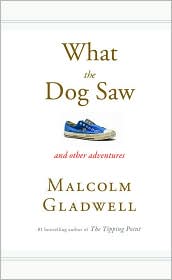Thought Leaders Unpacked -> What the Dog Saw #7: Open Secrets
 Craziness. Think about it. Enron was not keeping secrets. The executives explained their actions to the early inquirers. It was all out in the open.
Craziness. Think about it. Enron was not keeping secrets. The executives explained their actions to the early inquirers. It was all out in the open.
But it was complex. Complicated in detail and extent. Possibly too complicated for any one person, team or company to wrap their minds around completely. Certainly too complicated for the average investment manager to comprehend… even though all the information was available all of the time.

I think I learned more from this chapter than any other so far. Most powerful to me is Gladwell’s distinction between puzzle and mystery.
The significance lies in the different approaches to solving, understanding, and perceiving that take place depending on whether an issue is dealt with as a puzzle or a mystery.
Perception is reality. And therein lies the rub. If you’ve already decided that something bad has happened and the perpetrator must be identified and held to account, then you look for a perpetrator. Your eyes are closed to other avenues of inquiry.
On the other hand if you see that something bad has happened and intend to explore what the contributing factors were, how they came together and resulted in the current bad situation, then you look for multiple causes, issues and dynamics. Your eyes are open to all avenues of inquiry.
How many of the analyses, verdicts, and positions of attacking leaders, biased pundits and suspicious spouses arise from mistaking complicated mysteries for solvable puzzles?
How might you catch yourself treating a mystery as a puzzle? What was you main take-away from this chapter?







March 24th, 2010 at 9:42 pm
Thanks for this series.
The distinction between puzzles and mysteries is my biggest takeaway from the book. What a valuable new way to re-look at the world (after I re-read that chapter again).
March 25th, 2010 at 11:22 am
Promod,
Thanks for checking in. Gladwell is always worth a re-read, isn’t he?!
He has a great way of climbing over to a variety of vantage points and describing the exact same set of circumstance from those very different points of view. It’s fascinating what radically different conclusions get drawn!
– Karl